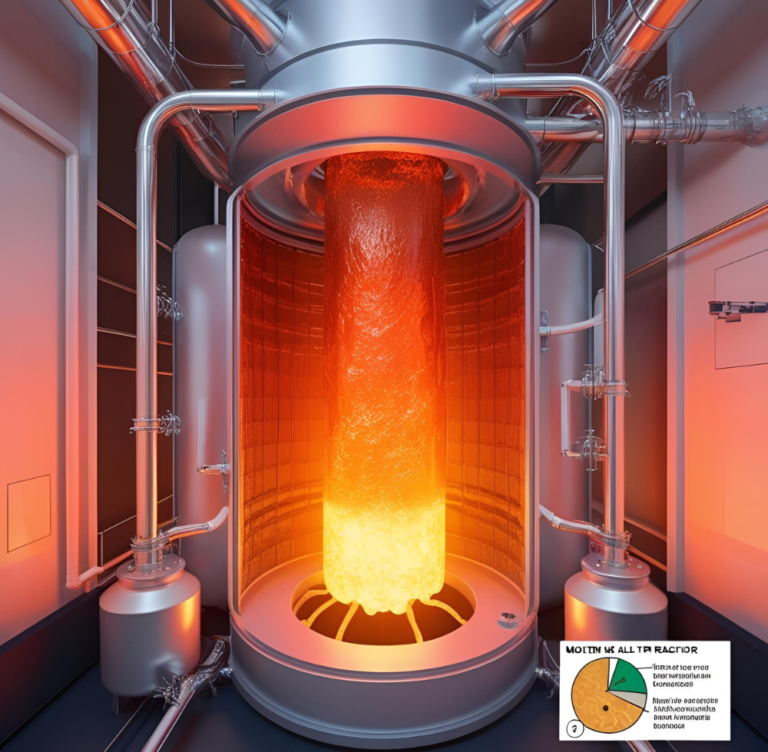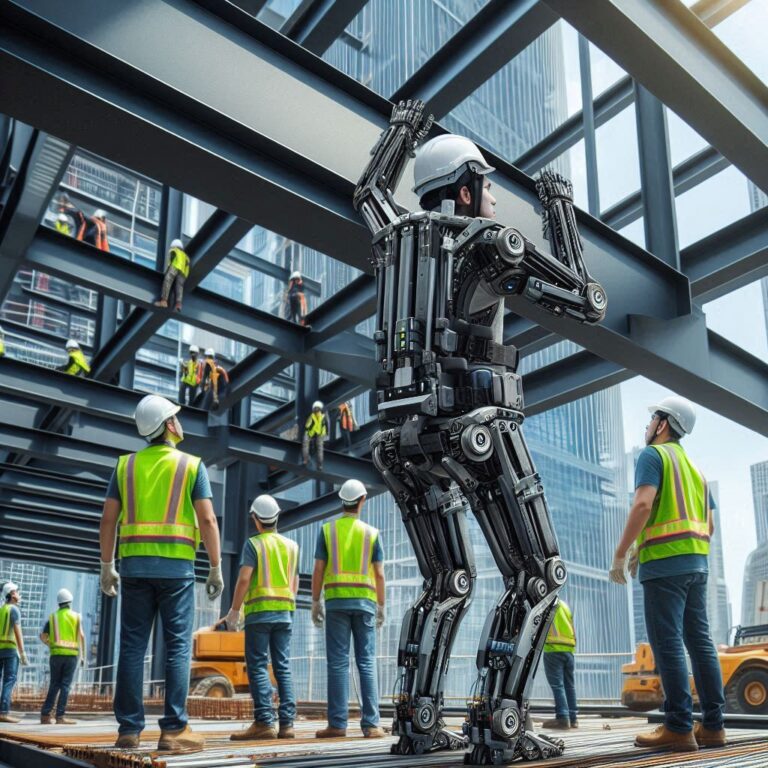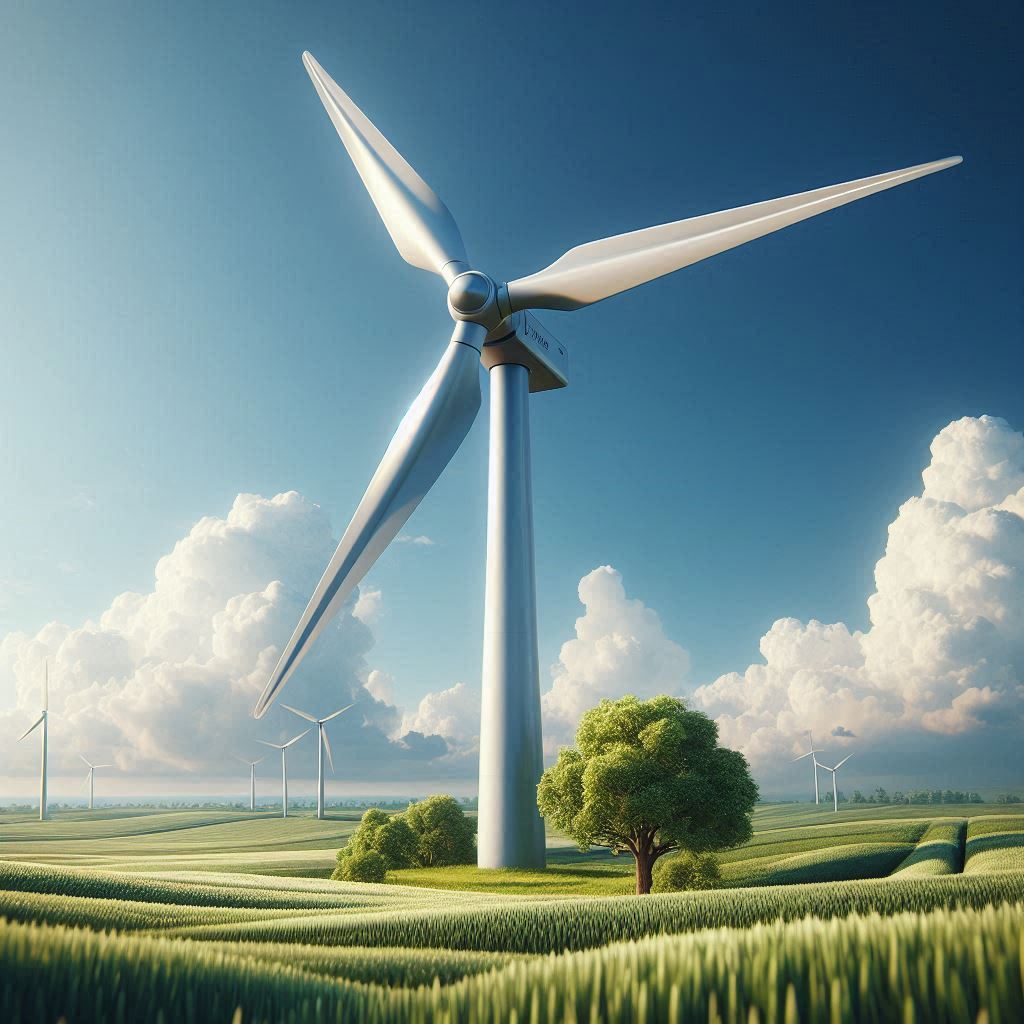
Invention of Windmill
The windmill, with its graceful blades slicing through the air, is more than just a picturesque landmark. It’s a silent symphony of human ingenuity, whispering tales of ancient wisdom and echoing with the promise of a sustainable future. Its journey, shrouded in the mists of time, stretches back millennia, its origins a captivating blend of myth and historical whispers.
While whispers of wind-powered machines like water-raising wheels in ancient Babylon and Persia around 1000 BCE tantalize historians, it’s in the 7th-9th centuries AD that the windmill truly took flight. In the arid plains of what is now Iran and Afghanistan, the Panemone windmill emerges, its horizontal sails harnessing the wind’s energy to pump water and grind grain. This pivotal moment marks the dawn of a transformative era, where human muscle gives way to the wind’s tireless dance.
The impact of this seemingly simple contraption is profound. Across continents, windmills take root, their sails whispering tales of progress:
- Fields Flourish: From the Dutch polderlands to the sun-drenched plains of China, windmills breathe life into arid landscapes. Their tireless toil pumps water, irrigating parched fields and nurturing bountiful harvests. This newfound power liberates human hands, boosting agricultural output and fueling trade.
- Societies Reshaped: The rhythmic creak of windmills becomes a familiar lullaby, their silhouettes etching themselves onto cultural landscapes. Iconic Dutch windmills with their towering sails become symbols of resilience and ingenuity, while quaint English smock mills dot the countryside, whispering tales of rural charm.
- A Sustainable Symphony: Fast forward to the 21st century, and the windmill undergoes a breathtaking metamorphosis. Its humble wooden form transforms into sleek, towering turbines, dominating skylines and harnessing the wind’s whispers to generate clean, renewable electricity. This evolution reflects not just technological advancement but a collective shift towards a greener future.
Brief History of Windmills
The Birth of Windmills (500-900 AD)
While the 9th century marks the documented birth of windmills in Persia, the seeds of this technology were sown much earlier. Archaeological evidence suggests:
- Ancient Egypt: Water-raising devices powered by wind, known as “sailwheels,” appeared around the 1st century BCE. These rudimentary machines hinted at the potential of harnessing wind energy.
- Roman Empire: Vitruvius, a Roman architect, described wind-powered water pumps in his writings around the 1st century BCE. These devices, though not widespread, further solidified the concept of wind-driven technology.
- Byzantine Empire: Wind-powered organs in Constantinople, dating back to the 7th century AD, showcase the diverse applications of wind technology beyond utilitarian purposes.
From Persia to Post Mills: A Tapestry of Innovation (500-900 AD)
- Horizontal Panemones in Persia: By the 9th century, the iconic horizontal-axis panemone windmill emerged in what is now Iran and Afghanistan. These robust structures, with their multiple rectangular sails, primarily served for grinding grain and pumping water. Archaeological finds, like unearthed millstones and water channels, solidify their existence and purpose.
- Vertical Windpumps in China: Around the same time, China witnesses the development of vertical-axis windpumps. These ingenious designs, often made of bamboo, used sails to lift water for irrigation and domestic use. Texts like the Tiangong Kaiwu (Treatise on the Exploitation of Nature’s Works) provide detailed descriptions of these wind-powered machines.
The European Windmill Renaissance (12th-13th Century)
- Post Mills Take Root in Northwestern Europe: By the 12th century, vertical-axis post mills began appearing in England, France, and the Netherlands. These structures, with their rotating house that housed the grinding stones, offered greater flexibility in adapting to wind direction. Archaeological finds, like preserved mill bases and timber fragments, reveal the evolution of post-mill designs.
- Dutch Dominance and Beyond While the Dutch are often credited with pioneering horizontal-axis windmills, advancements were happening across Europe. France developed sophisticated tower mills, while England saw the emergence of smock mills with distinctive thatched roofs. This diversity highlights the regional adaptations and ingenuity at play.
Beyond Grain and Water: Expanding Horizons of Wind Power
It’s crucial to remember that early windmills weren’t solely confined to grinding grain and pumping water. Recent research suggests:
- Industrial Applications: Windmills powered sawmills for timber processing, crushed minerals for various uses, and even drove early textile machinery. This broadens the scope of their impact on early industrial processes.
- Social and Cultural Significance: Windmills became not just functional structures but also landmarks, shaping landscapes and influencing local folklore. Studies showcase their role in community development and cultural identity.
Flourishing in the Netherlands (17th Century)
The 17th century wasn’t just a boom for Dutch windmills; it was a full-blown symphony of innovation and ingenuity. These iconic structures, with their majestic sails and sturdy frames, weren’t just picturesque landmarks; they were the backbone of Dutch society:
- Beyond Milling: While grain milling remains synonymous with Dutch windmills, their repertoire extends far beyond. Archaeological evidence reveals windmills powering sawmills that carved timber for shipbuilding and construction. Spice mills ground exotic imports like pepper and cinnamon, fueling the Dutch spice trade.
- Land Reclamation Warriors: The Netherlands, a land intricately woven with water and wind, faced a constant battle against the sea. Wind-powered pumps, known as poldermolens, became crucial weapons in this fight. These tireless giants pumped water out of low-lying polder lands, reclaiming vast tracts of fertile soil for agriculture and urbanization.
- Technological Advancements: Dutch ingenuity wasn’t content with simply replicating existing designs. Studies suggest they pioneered innovations like the “windrose” system, allowing windmills to automatically adjust their sails to the wind’s direction, maximizing efficiency. Specialized sails like “bleekzeilen” were developed for cloth bleaching, showcasing the versatility of these technological marvels.
Explore-
- The Dutch Mill Network Website– has a wealth of information on Dutch windmills
- The History Channel website has a short article on the importance of windmills in the Dutch Golden Age
Windmills in America (18th Century)
As European settlers crossed the Atlantic, they carried the legacy of windmills in their hearts and tools. In the American colonies, windmills became indispensable companions:
- Grinding Grain, Conquering Arid Lands: From the verdant fields of New England to the sunbaked plains of the West, windmills powered flour production, ensuring a steady supply of bread for growing communities. In arid regions like the Great Plains, wind-powered water pumps proved crucial for irrigation, transforming barren landscapes into fertile farmlands.
- Local Adaptations, Familiar Designs: While Dutch designs like the “smock mill” found favor in the East Coast, American ingenuity led to adaptations like the “post mill,” particularly suited for the forested landscapes of the interior. Tower mills, reminiscent of their European counterparts, also dotted the American landscape, showcasing a fascinating blend of tradition and adaptation.
List of Windmills in the United States
Windmills Meet the Industrial Revolution (19th Century)
The 19th century wasn’t just about steam and steel; it was also about windmills evolving to meet the demands of a changing world:
- Self-Regulating Symphony: Innovations like the “fantail” system, a small wind turbine that automatically adjusted the main sails, ensured optimal performance even in fluctuating wind conditions. This self-regulating feature marked a significant leap in efficiency, allowing windmills to compete with the rising tide of steam power.
- Beyond Rural Roots: Windmills weren’t confined to rural landscapes anymore. In Europe and North America, they found applications in powering factories and workshops, providing a clean and reliable source of energy for early industrial processes. This integration into the industrial fabric solidified windmills’ role in the evolving energy landscape.
- Steel and Innovation: Technological advancements like the use of steel for blades and towers further strengthened windmills. These sturdier structures could withstand harsher weather conditions and handle increased loads, paving the way for larger and more powerful wind turbines in the future.
The Decline and Resurgence (20th Century)
The rise of electricity, a potent and readily controllable energy source, undeniably played a significant role in the decline of windmills. However, the story is nuanced:
- Economic Pressures: Centralized electricity grids offered economies of scale and wider reach, making them a more attractive option for governments and industries. This, coupled with the high maintenance costs of windmills, made them less commercially viable.
- Technological Limitations: Early windmills were weather-dependent and lacked efficient storage solutions for surplus energy. This inconsistency and limited practicality further hampered their competitiveness against the rising tide of electricity.
- Shifting Priorities: The 20th century witnessed a focus on fossil fuels as readily available and affordable energy sources. This, combined with the perceived romanticism of windmills as relics of the past, led to a decline in their cultural and technological importance.
A Resurgence Fueled by Necessity (Late 20th Century)
However, the 20th century wasn’t solely a story of decline. The latter half witnessed a dramatic resurgence in interest in wind power, driven by:
- The Oil Crisis and Energy Security Concerns: The 1973 oil crisis exposed the vulnerability of fossil fuel dependence, prompting a search for alternative energy sources. Wind power, with its abundant and renewable nature, emerged as a promising contender.
- Environmental Concerns and Climate Change: The growing awareness of environmental degradation and climate change spurred a shift towards clean and sustainable energy solutions. Wind power, with its minimal emissions, became a beacon of hope in the fight against climate change.
- Technological Advancements and Cost Reductions: Advancements in materials like fiberglass and steel made wind turbines lighter, stronger, and more efficient. Additionally, research into grid integration and energy storage solutions addressed earlier limitations, paving the way for large-scale wind power integration.
Windmills in the 21st Century
The 21st century has witnessed the metamorphosis of the humble windmill into a sleek and powerful wind turbine. These modern marvels of engineering stand tall, not just as symbols of progress but as key players in a sustainable future:
- Global Wind Powerhouses: Countries like China, the United States, and Germany have emerged as leaders in wind energy production, with vast wind farms dotting their landscapes. This widespread adoption showcases the scalability and economic viability of wind power.
- Offshore Expansion and Technological Advancements: Technological advancements like floating offshore wind farms are pushing the boundaries of wind energy generation, harnessing the stronger and steadier winds over oceans. Research into next-generation turbine designs and materials promises even greater efficiency and performance in the future.
- The Green Energy Revolution: Wind power is at the forefront of the transition to a sustainable energy future. It plays a crucial role in reducing greenhouse gas emissions, combating climate change, and promoting energy independence. Studies suggest that wind power could eventually become one of the most dominant sources of electricity globally.
Applications of Windmill
Grain grinding:
- First Use: Evidence suggests the earliest documented use of windmills for grinding grain dates back to 9th century Persia. These horizontal-axis “panemone” windmills laid the foundation for a technology that would revolutionize food production.
- Wind-powered mills dramatically increased grinding efficiency compared to manual or animal-powered methods. This boosted food security, enabled trade surpluses, and supported the growth of urban centers, shaping the trajectory of early civilizations.
Water pumping:
- First Use: Archaeological evidence points to wind-powered water pumps in use as early as the 1st millennium BCE in Mesopotamia. These ingenious designs spread across continents, with iconic windpumps dotting the landscapes of Iran, Afghanistan, and Pakistan for centuries.
- From securing drinking water for communities to irrigating vast agricultural lands and reclaiming low-lying areas, wind-powered pumps transformed arid regions and fostered human settlements in previously uninhabitable landscapes.
Textile manufacturing:
- First Use: Windmills found applications in the textile industry as early as the Middle Ages. They powered machinery for crushing flax seeds (used for linen production), preparing hemp fibers, fulling cloth (thickening and strengthening fabric), and even grinding pigments for paint.
- Windmills provided a reliable and efficient source of power for various stages of textile production, boosting output, reducing labor costs, and contributing to the flourishing of this vital industry.
Sawing wood:
- First Use: The 16th century marked the dawn of wind-powered sawmills, with the first documented example appearing in the Netherlands in 1596. These innovative mills revolutionized timber processing, replacing slow and laborious manual methods.
- Wind-powered sawmills dramatically increased lumber production, making wood readily available for construction, shipbuilding, furniture making, and various other industries. This abundance of timber fueled infrastructure development, maritime exploration, and economic growth

Mining:
- First Use: While less documented than other applications, historical records suggest windmills were used in mining operations as early as the 17th century. They powered pumps to drain water from mineshafts and hoists to lift ore and materials.
- Windmills enhanced the efficiency and safety of mining operations, enabling deeper excavations and increased mineral extraction. This played a crucial role in fueling advancements in various industries reliant on metals and minerals.
These are early applications of windmills when they were first developed by humans. Today we are mainly using wind turbines to drive generators and produce electricity, but windmills still have applications in other areas too like pumping water and agriculture.
Impact of Windmills
Windmills- Renewable, emission-free Energy source
Environmental Impact:
- Pollution-Free Powerhouse: Wind turbines generate clean electricity without releasing harmful air pollutants like sulfur dioxide or nitrogen oxides, unlike fossil fuel-based power plants. This significantly reduces respiratory illnesses and acid rain, contributing to cleaner air and healthier communities.
- Climate Change Warrior: Wind power is a key player in the fight against climate change. It doesn’t emit greenhouse gases like carbon dioxide, a major contributor to global warming. By replacing fossil fuels, wind energy helps mitigate the effects of climate change, protecting ecosystems and ensuring a sustainable future.
- Water-Wise Warrior: Unlike traditional power plants that require vast amounts of water for cooling, wind turbines operate without water consumption. This is crucial in arid regions facing water scarcity and alleviates pressure on freshwater resources.
Economic Impacts:
- Job Creation and Growth: The wind energy sector generates significant employment opportunities, from manufacturing and installation technicians to engineers and maintenance personnel. This fosters economic growth, boosts local economies, and provides skilled jobs in rural and urban areas.
- Energy Security and Independence: Reliance on wind power reduces dependence on imported fossil fuels, enhancing energy security and independence for nations. This empowers countries to control their energy costs and avoid geopolitical uncertainties associated with fossil fuel markets.
- Decentralized Power: Wind farms can be located closer to areas of energy consumption, reducing transmission losses and improving grid stability. This decentralized approach empowers local communities and promotes energy self-sufficiency.
Social and Cultural Impact:
- Land Use and Aesthetics: Wind farms occupy relatively small footprints compared to traditional power plants. They can coexist with agricultural activities and even enhance biodiversity by providing habitat for certain bird species. However, visual impact and concerns about noise pollution require careful planning and community engagement.
- Public Health and Wellbeing: Studies suggest living near wind farms can have positive health impacts due to reduced air pollution from fossil fuels. Additionally, wind energy projects can contribute to rural development and community resilience, fostering a sense of ownership and pride.
- Technological Advancements: The wind energy sector is constantly evolving, with advancements in turbine design, materials, and energy storage solutions. This ongoing innovation drives cost reduction, improves efficiency, and opens doors for wider application of wind power in the future.
Negative Impacts on the Environment
While wind energy undeniably plays a crucial role in the transition to a sustainable future, acknowledging its environmental challenges offers a balanced and nuanced perspective. Let’s delve deeper into these challenges, exploring recent studies and ongoing debates:
Visual Impact and Land Use:
- Aesthetic Concerns: The imposing size and presence of wind turbines can raise concerns about visual intrusion and disruption of scenic landscapes. Studies suggest potential impacts on tourism and property values, particularly in sensitive areas like national parks.
- A study in Nature Sustainability found that wind farm visibility can decrease property values by up to 5%, sparking debates in scenic regions like Maine’s coastline. In Scotland, community backlash led to revisions in siting guidelines to prioritize visual sensitivity.
- Habitat Fragmentation and Displacement: Wind farms can fragment wildlife habitats and displace some species. While advancements in siting and planning mitigate these impacts, concerns remain for sensitive ecosystems and migratory corridors.
- A 2022 study in Ecological Applications warned that wind farms in the Great Basin desert fragmented pronghorn antelope habitat, potentially impacting migration patterns. However, the Alta Wind Energy Center in California collaborates with conservation groups to minimize habitat disruption and restore affected areas.
Wildlife Collisions and Mortality:
- Bird and Bat Fatalities: Collisions with turbine blades pose a threat to birds and bats, with some species facing higher risks due to migratory patterns or foraging behavior. Recent studies highlight the need for improved mitigation strategies like radar technology and turbine shutdowns during peak migration periods.
- A 2021 study in Science Advances estimated that US wind turbines kill 483,000 birds annually, raising concerns about vulnerable species like the California condor. In Spain, researchers are testing radar-based systems to alert turbines of approaching birds, leading to significant reductions in collisions.
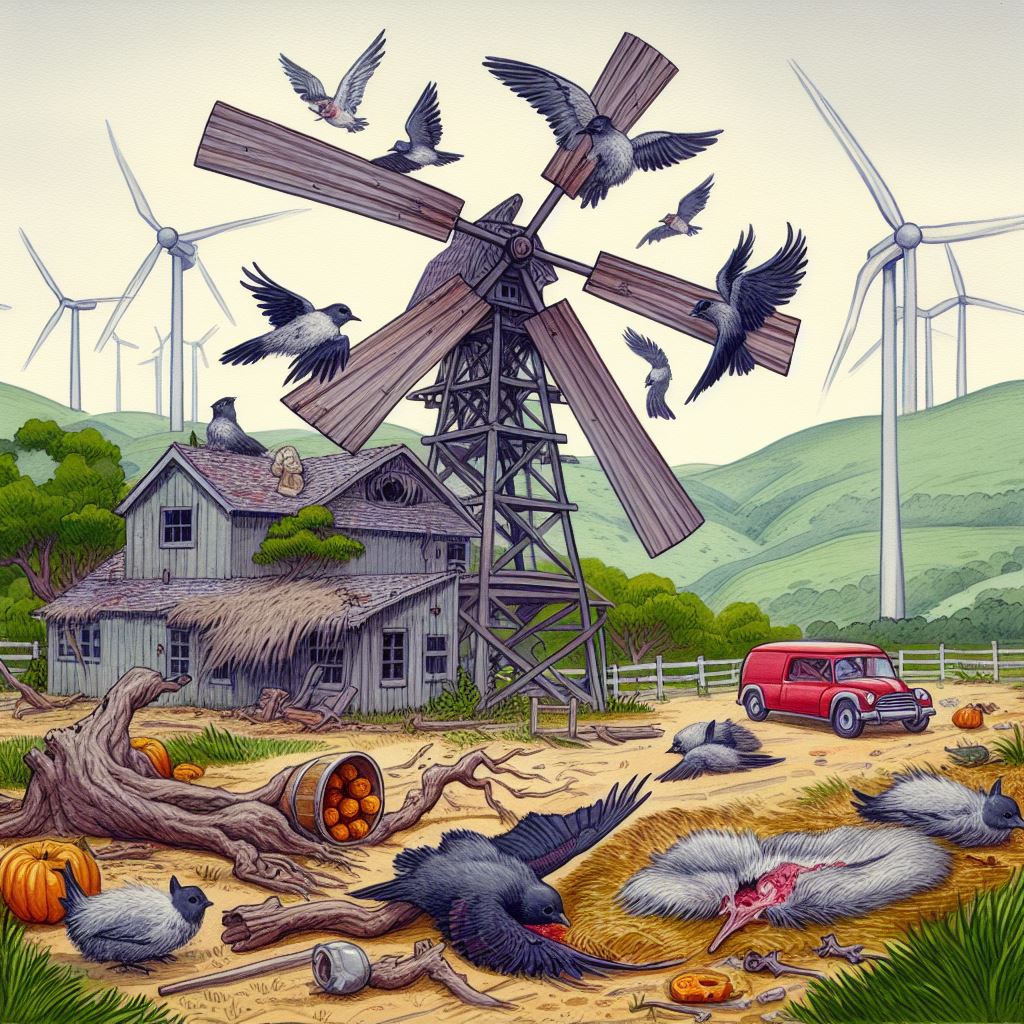
- A 2023 study in Conservation Biology highlighted the cumulative effect of multiple wind farms on bat populations in Germany. In response, the German wind industry and research institutions are collaborating to develop nationwide mitigation strategies.
- Cumulative Impacts and Population Decline: While individual turbine impacts might be low, the cumulative effect of multiple wind farms across landscapes can be significant for vulnerable species, raising concerns about population decline and ecological balance.
Operational Impacts and Pollution:
- Noise Pollution and Shadow Flicker: Though less common, turbine noise and the flickering effect of moving blades can sometimes disturb nearby residents, impacting their quality of life and requiring careful consideration during project siting.
- A study in Environmental Impact Assessment found that wind turbine noise can negatively impact sleep quality for residents living close to wind farms. However, Denmark, a wind energy leader, implements strict noise regulations and buffer zones to minimize community disturbance.
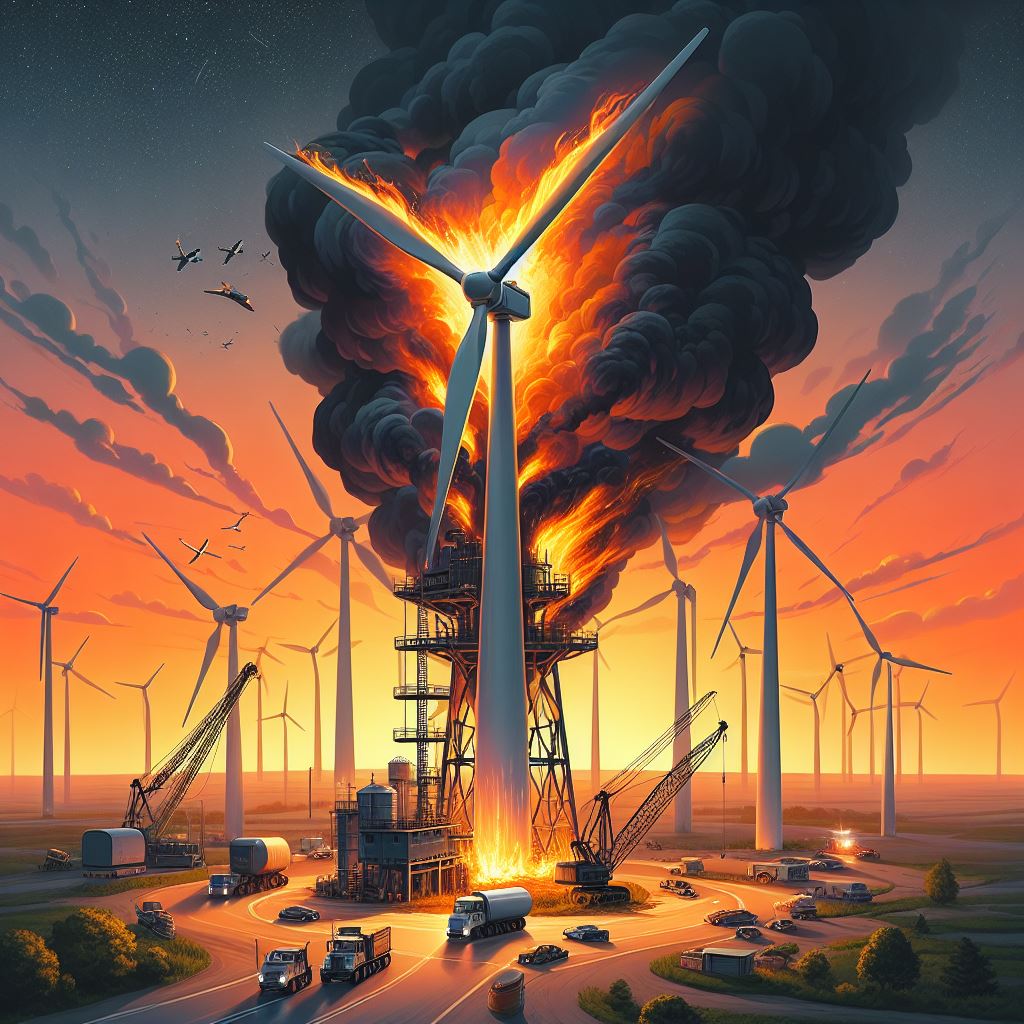
- Lubricating Oil Leaks and Fire Risks: Although rare, accidental oil spills and turbine fires can have local environmental consequences.
- The American Wind Energy Association has strict guidelines for spill prevention and containment, and wind farm operators conduct regular inspections and maintenance.
Finding Solutions and Embracing Collaboration:
The wind industry isn’t standing idly by. Collaborative efforts are driving solutions:
- Technological Advancements: Researchers in the Netherlands are developing “bat-friendly” turbines with slower blade speeds and modified tip shapes to reduce bat fatalities. In the US, companies are testing radar and acoustic deterrents to guide birds away from turbine blades.
- Improved Siting and Planning: The UK’s revised National Planning Policy Framework emphasizes prioritizing sensitive ecosystems and involving communities in wind farm development decisions, fostering social acceptance.
- Monitoring and Adaptive Management: The German Federal Agency for Nature Conservation monitors bird and bat populations near wind farms, informing adaptive management strategies and adjustments to turbine operations to minimize impacts.
Environmental Impacts of Windmills
Conclusion
In conclusion, the windmill is one of the greatest innovations in history. Since the beginning of ancient Persia and China, windmills continued to improve till modern-day use as a renewable energy source, Despite some negative impacts on the environment, the windmill is a very Important engineering marvel for human development. It had an impact on agriculture, industry, and the energy sector.
Dive into more of my articles! Find my other blogs here:
- The Invention and History of the Printing Press
- The invention of Radar
- The Invention of Electric Motor
- Biogas Plants: The Future of Green Energy

.png)

